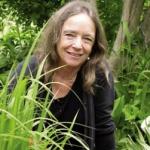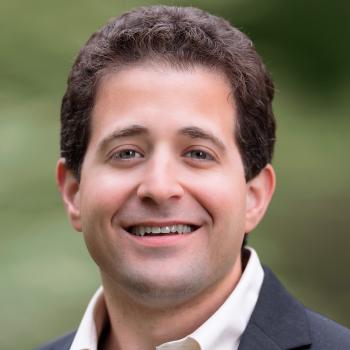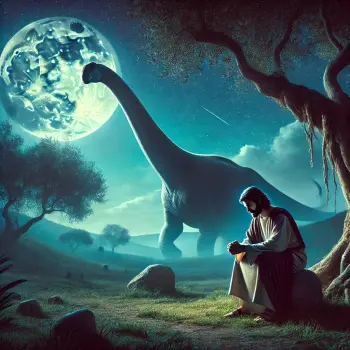Teilhard and Big History
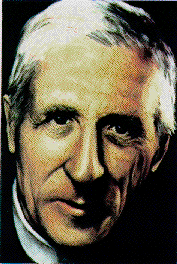
Who was the first big historian? Who first spliced together Charles Darwin’s theory of evolution with physical cosmology and human history to tell a single story of everything in reality? Answer: Pierre Teilhard de Charin (1881-1955). Teilhard and Big History: that’s our topic here.
Perhaps you recall that Teilhard de Chardin was a French Jesuit priest and paleontologist famed for his role in the 1921 discovery of Peking Man (Homo erectus pekinensis). This 780,000-thousand-year-old find is a subspecies of Homo erectus which inhabited the Zhoukoudian cave site in modern northern China during the Chibanian epoch. The priest was excavating in China with anthropologist George Barber [father of Ian Barber famed for his pioneering work in science and religion], at the time. Teilhard knew evolution from the inside.
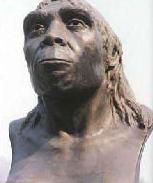
Later in his illustrious career as a scientist, Teilhard began to re-tell the creation story by nesting science and religion in Big History. Deep time, for Teilhard, became God’s way of drawing simple dumb matter through stages of growing complexity until consciousness could emerge.
Evolution is going somewhere. It has a direction. It has a culmination. What is that culmination? Teilhard calls it Point Omega. At Point Omega, all that is diverse finds unity in a single shared consciousness.
“By its structure Omega, in its ultimate principle, can only be a distinct Centre radiating at the core of a system of centres; a grouping in which personalisation of the All and personalisation of the elements reach their maximum, simultaneously and without merging, under the influence of a supremely autonomous focus of union” (P. T. De Chardin, The Phenomenon of Man 1959, 262).
Asking about Teilhard and Big History uncovers a problem that needs solving.
So, then, what’s the problem?
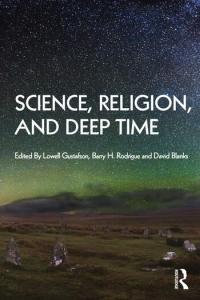
Here’s the problem. Today’s big historians are groping and fumbling to find a way to connect Big History with religion. Big historians fear they cannot connect their strictly evidence-based science with the transcendent claims of religious believers. Still, they want to add religion to their science.
I fear it’s too easy to misformulate the problem. What frequently goes unrecognized is that today’s big historians previously expunged religion from Big History. It was yesterday’s excising of religion that created today’s problem. Science and religion were already integrated in the days of Teilhard de Chardin.
This is a point made by Georgetown’s John Haught and Villanova’s Ilia Delio within the fine book I’m recommending, Science, Religion, and Deep Time. Yes, thankfully, the book contains illuminating chapters on Shinto, Hinduism, Islam, Christianity, and women’s spirituality. What we find in the chapters by Haught and Delio is the introduction of Teilhard and Big History.
Competing myths of origin
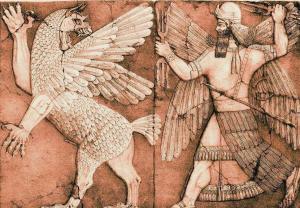
Now, I want to sympathize with our big historian raconteurs. On the surface, expunging religion seems to be required to believe in Big Bang cosmology. Big Bang is based on evidence-based science. It tells us that our expanding universe began as a singularity 13.8 billion years ago. Working with the conflict model between science and religion, big historians feel compelled to choose one or the other. So, big historians choose to believe in the Big Bang.
If science and religion are in fact in conflict, then the Big Bang story must be irreconcilable with the myths of religions traditions. So think big historians. Myths of origin such as we find in ancient Babylonia where the world is created from a battle between Tiamat and Marduk or in the Bible where the world is created in seven days by God’s Word conflict with Big Bang. At least if we read these ancient myths literally.
Big historians read both the ancient myths literally and Big Bang theory literally. They read Enuma Elish and Genesis literally. But, because they differ from Big Bang, the ancient myths must be wrong. Right?
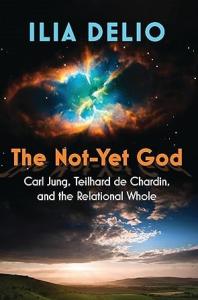
Therefore, big historians feel we must reject religious myths when telling the evidence-based scientific story of our cosmos. In my judgment, this is quite understandable. Frustratingly understandable.
Why frustrating? Because the non-sequitur in this BH logic is the assumption that if we read religious myths literally then we must dismiss everything that comes in a religious package. What is left out of the BH research program is the symbolic reading of ancient creation myths. What is also discarded unnecessarily are classic theological attempts to understand transcendence.
It appears that big historians unnecessarily entangle themselves in conundrums when they rely on the conflict model between science and religion. Ilia Delio, who holds one doctorate in science and another doctorate in theology, offers a cryptic judgment.
“Whoever holds to a position of conflicte between science and religion knows neither science nor religion” (Gustafson, 2023, 202).
What does Big History mean?
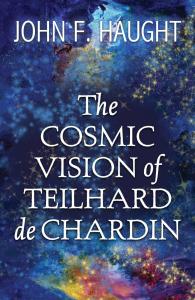
What matters most to big historians such as Haught and Delio is the question of meaning: what is the meaning of one’s individual life in the context of the meaning of the cosmos as a whole?
Big historian David Christian illustrates the problem. His “modern origin story lacks a creator god…the modern story is about a universe that just is. Any sense of meaning comes not from the universe, but from us humans” (Christian 2018, 9). That is to say, our universe exhibits no meaning, objectively speaking. What meaning we experience is reduced to human subjectivity.
The problem of meaning which today’s big historian faces is the same problem the entire Enlightenment has faced for several centuries. The problem is that science cannot account for meaning. Science cannot justify meaning. To look for meaning in the scientific interpretation of the universe is like fishing in a dried-up lakebed. The notorious words of physicist Steven Weinberg haunt the present generation.
“The more [scientifically] comprehensible the universe has become, the more pointless it also seems”(Weinberg, 1977, 144).
Meaning in the Cosmic Story
In contrast to Weinberg, Teilhard’s cosmos is guided by a telos, a purpose, and a meaning. Through human consciousness, evolution is becoming aware of itself. The cosmos is beginning to realize its purpose, to anticipate Point Omega, to incarnate its destiny. The sign of this dawning awareness is the growth of the noosphere, the appearance of a shared consciousness. Haught draws out the implicastions.
“Our Earth is now clothing itself in something like a brain. Teilhard, not surprisingly, has sometimes been called the prophet of the Internet since he predicted long ago that our planet itself will continue to increase in technological complexity. A planetary consciousness, an ultra-human noosphere, seems now to be in the very early stages of becoming a reality If it is ever to amount to anything significant, however, this noosphere will have to be animated and held together by forces of attraction that transcend everything that physics and other natural sciences are capable of grasping. Only religion can provide these essentials”(Gustafson, 2023, 194).
The very consciousness of the global human community is evidence of cosmic meaning. Why can’t this be admitted as evidence of meaning in the evidence-based method of the big historian?
God and the Cosmos at Point Omega
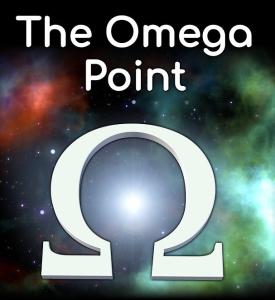
Now we must grant that Teilhard’s description goes well beyond what evidence-based scientific knowledge can ordinarily posit. Teilhard turned the metaphysics of thomas Aquinas ninetry degrees so that divine transcendence now comes to us from the future rather than from heaven above, from the top of the ontological ladder.
“I mean the rise on our inward horizon of a cosmic spiritual centre, a supreme pole of consciousness, upon which all the separate consciousness of the world may converge and within which they may love one another: the rise of a God” (P. T. De Chardin, The Phenomenon of Man 1959, 1424-125)
Stop looking for God up above in heaven, says Haught. Rather look up ahead for God in our future.
“First of all, think of God as ‘up ahead’ and not just up above….The God of the Bible is the God who comes from the future, the Liberator who urges or encourages the people of God to trust in the prospect of a final fulfillment in the future….Indeed God is the world’s future” (Gustafson, 2023, 199).
This grand vision represents one theological viewpoint among many competing religious viewpoints, to be sure. So, we must grant that Teilhard’s theory of cosmogenesis is science plus Christian theology. What about alternative theologies?
Sri Aurobindo and Big History
Hindu Sri Aurobindo Ghose (1872-1950) provides such an alternative. Like Teilhard, Aurobindo framed his cosmology within evolution. Yet, Aurobindo was not a naturalist or materialist. For the Pondicherry saint, spirit inheres in matter and matures as matter evolves. Instead of proposing that the human mind evolves gradually out of material processes, Aurobindo proposes that those material processes arose out of a prior consciousness.
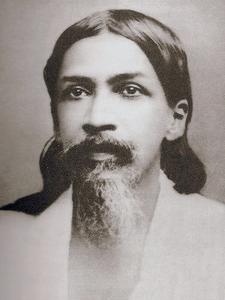
“We speak of the evolution of life in matter, the evolution of mind in matter; but evolution is a word which merely state the phenomenon without explaining it. For there seems to be no reason why life should evolve out of material elements of mind out of living form, unless we accept the Vedantic solution that life is already involved in matter and mind in life because in essence matter is a from of veiled life, life a form of veiled consciousness” (Aurobindo 1972, 18:3).
Like big historians, Aurobindo borrows Darwinian evolutionary theory. But a strictly materialist or naturalist description of evolution is incomplete. It fails to attend to ultimate reality. Ultimate reality includes consciousness, spirit, and divinity.
Conclusion: Teilhard and Big History
We have been asking about the relatioship between Teilhard and Big History. Teilhard belongs to the first generation of big historians. Science, religion, meaning, and deep time found a harmonious melding in the Teilhardian vision.
Be that as it may, we cannot demand that every big historian become a Teilhardian. Christian theology derives primarily from faith, not from laboratory science. In our world, we enjoy a plurality of faiths. We can imagine more than one alternative for integrating science, religion, and Big History.
Regardless of the faith commitment of the big historian, the cosmologies of Teilhard and Sri Aurobindo are themselves facts of intellectual history. This warrants the attention of the big historian who could study, analyze, and evaluatie theological history right along with evidence-based scientific cosmology.
Perhaps the field of Big History might have to divide between those for whom evidence-based science excludes religion and those for whom a religiously derived meaning is integrated. Certainly, these two parties within Big History could enjoy each other’s company at the barbecue.
For more on our analysis of Big History, start clicking.
Patheos SR 5051 BH 1 Science, Religion, and Deep Time
Patheos SR 5052 BH 2 Science and Religion in Big History
Patheos SR 5053 BH 3 Teilhard and Big History
Patheos SR 5054 BH 4 What is history in Big History?
Patheos SR 5055 BH 5 God in Cosmic History
Patheos SR 5058 BH 8 Big History, Religious Naturalism, and Ursula Goodenough
Patheos SR 5059 BH 9 Bigh History and Progressive Christianity: Thomas Lindell
Patheos SR 5060 BH 10 Critique of Ted Peters by Mitchell Diamond
▓
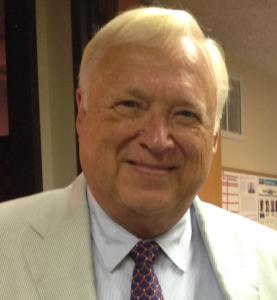 Ted Peters pursues Public Theology at the intersection of science, religion, ethics, and public policy. Peters is an emeritus professor at the Graduate Theological Union, where he co-edits the journal, Theology and Science, on behalf of the Center for Theology and the Natural Sciences, in Berkeley, California, USA. His book, God in Cosmic History, traces the rise of the Axial religions 2500 years ago. He tackled the implications of genetic innovation for the future of humanity in Playing God? Genetic Determinism and Human Freedom? (Routledge, 2nd ed., 2002) as well as For the Love of Children: Genetic Technology and the Future of the Family (Westminster/John Knox 1997). His essays are collected in Science, Theology, and Ethics (Ashgate 2003) The Voice of Public Theology (ATF 2023).
Ted Peters pursues Public Theology at the intersection of science, religion, ethics, and public policy. Peters is an emeritus professor at the Graduate Theological Union, where he co-edits the journal, Theology and Science, on behalf of the Center for Theology and the Natural Sciences, in Berkeley, California, USA. His book, God in Cosmic History, traces the rise of the Axial religions 2500 years ago. He tackled the implications of genetic innovation for the future of humanity in Playing God? Genetic Determinism and Human Freedom? (Routledge, 2nd ed., 2002) as well as For the Love of Children: Genetic Technology and the Future of the Family (Westminster/John Knox 1997). His essays are collected in Science, Theology, and Ethics (Ashgate 2003) The Voice of Public Theology (ATF 2023).
Recently Ted edited AI and IA: Utopia or Extinction? (ATF 2019). Along with Arvin Gouw and Brian Patrick Green, he co-edited the new book, Religious Transhumanism and Its Critics hot off the press (Roman and Littlefield/Lexington, 2022). His fictional spy thriller, Cyrus Twelve, follows the twists and turns of a transhumanist plot.
Visit Ted Peters’ website, TedsTimelyTake.com.
▓
References
Aurobindo, Sri. 1972. The Life Divine. Pondicherry: Sri Aurobindo Birth Centenary Library.
Christian, David. 2018. Origin Story. London: Alan Land, Random House.
Christian, David, Cynthia Stokes Brown, and Craig Benjamin, eds. 2014. Big History Between Nothing and Everything. New York: McGraw Hill.
De Chardin, Pierre Teilhard. 1964. The Future of Man. New York: Harper.
—. 1959. The Phenomenon of Man. 1st. New York: Harper.
Delio, Ilia. 2023. The Not-Yet-God: Carl Jung, Teilhard de Chardin, and the Relational Whole. Maryknoll NY: Orbis.
Delio, Ilia, ed. 2014. From Teilhard to Omega: Cocreating an Unfinished Universe. Maryknoll NY: Orbis.
Gustafson, Lowell; Barry Rodrique, and David Blanks, eds. 2023. Science, Religion, and Deep Time. London: Routledge.
Haught, John. 2021. The Cosmic Vision of Teilhard de Chardin. Maryknoll NY: Orbis.
—. 2017. The New Cosmic Story. New Haven CT: Yale.
Peters, Ted. 2017. God in Cosmic History: Where Science and Big History Meet Religion. Winona MN: Anselm Academic ISBN 978-1-59982-813-8.
Weinberg, Steven. 1977. The First Three Minutes: A Modern View of the Origin of the Universe. New York: Basic.




